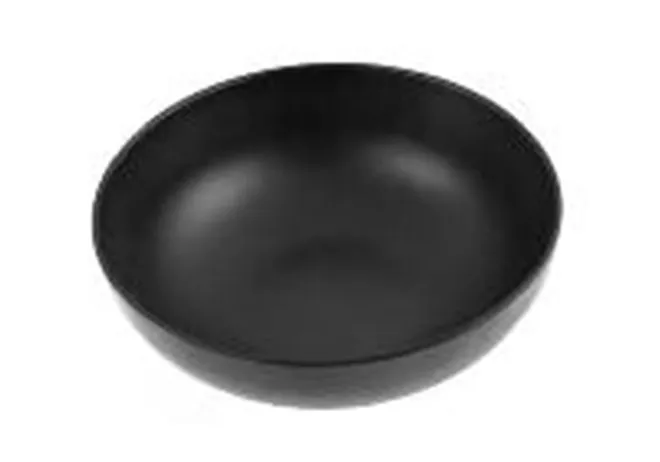-
Cangzhou Yulong Steel Co., Ltd.
-
Phone:
+86 13303177267 -
Email:
admin@ylsteelfittings.com
- English
- Arabic
- Italian
- Spanish
- Portuguese
- German
- kazakh
- Persian
- Greek
- French
- Russian
- Polish
- Thai
- Indonesian
- Vietnamese
- Zulu
- Korean
- Uzbek
- Hindi
- Serbian
- Malay
- Ukrainian
- Gujarati
- Haitian Creole
- hausa
- hawaiian
- Hebrew
- Miao
- Hungarian
- Icelandic
- igbo
- irish
- Japanese
- Javanese
- Kannada
- Khmer
- Rwandese
- Afrikaans
- Albanian
- Amharic
- Armenian
- Azerbaijani
- Basque
- Belarusian
- Bengali
- Bosnian
- Bulgarian
- Catalan
- Cebuano
- China
- China (Taiwan)
- Corsican
- Croatian
- Czech
- Danish
- Esperanto
- Estonian
- Finnish
- Frisian
- Galician
- Georgian
- Kurdish
- Kyrgyz
- Lao
- Latin
- Latvian
- Lithuanian
- Luxembourgish
- Macedonian
- Malgashi
- Malayalam
- Maltese
- Maori
- Marathi
- Mongolian
- Myanmar
- Nepali
- Norwegian
- Norwegian
- Occitan
- Pashto
- Dutch
- Punjabi
- Romanian
- Samoan
- Scottish Gaelic
- Sesotho
- Shona
- Sindhi
- Sinhala
- Slovak
- Slovenian
- Somali
- Sundanese
- Swahili
- Swedish
- Tagalog
- Tajik
- Tamil
- Tatar
- Telugu
- Turkish
- Turkmen
- Urdu
- Uighur
- Welsh
- Bantu
- Yiddish
- Yoruba

Oct . 11, 2024 23:06 Back to list
Understanding ANSI 300 WN Flange Specifications and Applications in Piping Systems
Understanding Flange WN ANSI 300 A Comprehensive Overview
Flanges are critical components in piping systems, serving as connectors between various sections of piping and valves. Among the various standards governing flanges, the ANSI (American National Standards Institute) standards are the most widely recognized in North America and broadly around the world. This article will focus on the WN (Weld Neck) flange type conforming to ANSI 300 specifications, covering its design, applications, and advantages.
What is a Weld Neck Flange?
A weld neck flange is a type of flange that features a long neck which gradually tapers to meet the piping system. The design allows for a smooth transition from the pipe to the flange, thus minimizing turbulence and pressure drops. Weld neck flanges are typically used for high-pressure applications, owing to their robust design and ability to withstand extreme conditions.
ANSI 300 Classification
The ANSI 300 designation refers to the pressure class of the flange. In piping systems, flanges are classified by their pressure-temperature ratings, which indicate the maximum pressure a flange can handle at a given temperature. ANSI 300 flanges are rated to handle pressures up to 300 pounds per square inch (psi) at a temperature of 100°F, with reduced ratings at higher temperatures. This classification makes them suitable for various industrial applications where high strength and reliability are critical.
Materials Used
Weld neck flanges conforming to ANSI 300 can be made from various materials, including carbon steel, stainless steel, and alloys. The choice of material is essential and depends on factors such as the nature of the fluids being transported, temperature, and environmental conditions. Carbon steel flanges are common for general purposes, while stainless steel flanges are preferred in corrosive environments due to their excellent corrosion resistance.
Applications
WN ANSI 300 flanges find applications across numerous industries, including
1. Oil and Gas They are often used in high-pressure systems, connecting pipelines, valves, and vessels in upstream and downstream operations. 2. Chemical Processing The chemical industry frequently uses ANSI 300 flanges in systems that transport aggressive chemicals. Their robustness helps ensure safety and reliability.
flange wn ansi 300

3. Power Generation In power plants, these flanges connect steam and coolant lines, where high pressure is crucial to maintaining system integrity.
4. Water Treatment WN ANSI 300 flanges are also utilized in water treatment facilities, where high pressures can be encountered in various processes.
Advantages of WN ANSI 300 Flanges
1. Strength and Durability The design of weld neck flanges provides enhanced strength, making them suitable for high-pressure applications. Their robustness minimizes the risk of leakage or failure.
2. Ease of Installation The tapered design allows for a smooth weld connection to the pipe, which can help reduce installation time and complexity.
3. Versatility Available in various materials and sizes, ANSI 300 flanges can be tailored to meet specific application requirements.
4. Reduced Turbulence The gradual transition from the pipe to the flange reduces the chances of turbulence and pressure drops in the flow, enhancing system efficiency.
5. Long-Term Performance Weld neck flanges offer reliable, long-term performance even under cyclic loading conditions, making them an excellent choice for critical applications.
Conclusion
Flange WN ANSI 300 is a fundamental component in many industrial applications, emphasizing the importance of adhering to recognized standards for safety and performance. Understanding the specifications, benefits, and applications of these flanges will help engineers and operators make informed decisions, ensuring the integrity and efficiency of their piping systems. Whether in the oil and gas sector, chemical processing, power generation, or water treatment, the reliability and robustness of Weld Neck ANSI 300 flanges make them a preferred choice for maintaining operational excellence.
In practical scenarios, ensuring the correct selection, installation, and maintenance of these flanges is paramount. As industries continue to evolve and adapt to new technologies and processes, the significance of high-quality components like the WN ANSI 300 flange remains ever crucial.
Latest news
-
ANSI 150P SS304 SO FLANGE
NewsFeb.14,2025
-
ASTM A333GR6 STEEL PIPE
NewsJan.20,2025
-
ANSI B16.5 WELDING NECK FLANGE
NewsJan.15,2026
-
ANSI B16.5 SLIP-ON FLANGE
NewsApr.19,2024
-
SABS 1123 FLANGE
NewsJan.15,2025
-
DIN86044 PLATE FLANGE
NewsApr.19,2024
-
DIN2527 BLIND FLANGE
NewsApr.12,2024
-
JIS B2311 Butt-Welding Fittings LR/SR 45°/90° /180°Seamless/Weld
NewsApr.23,2024











